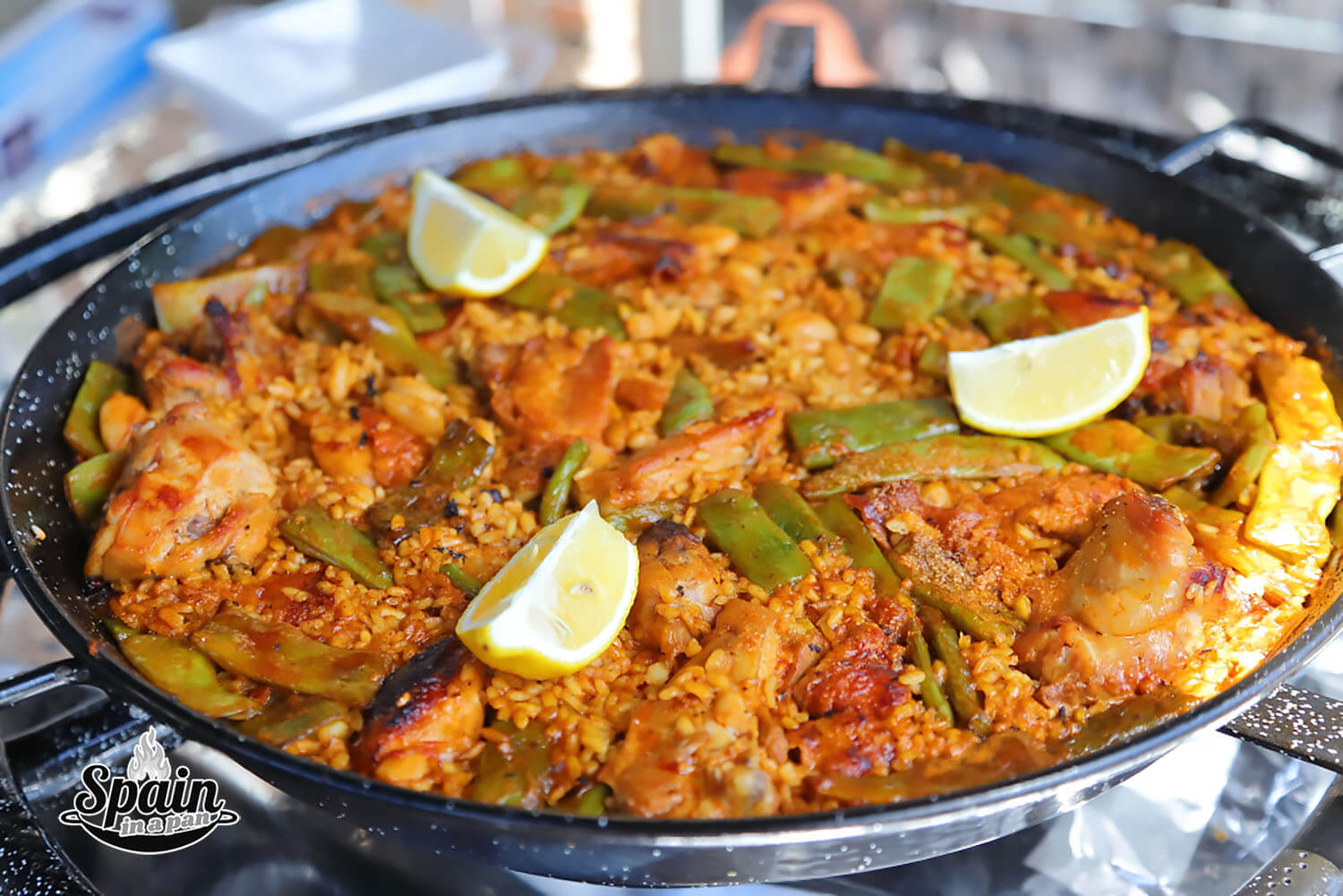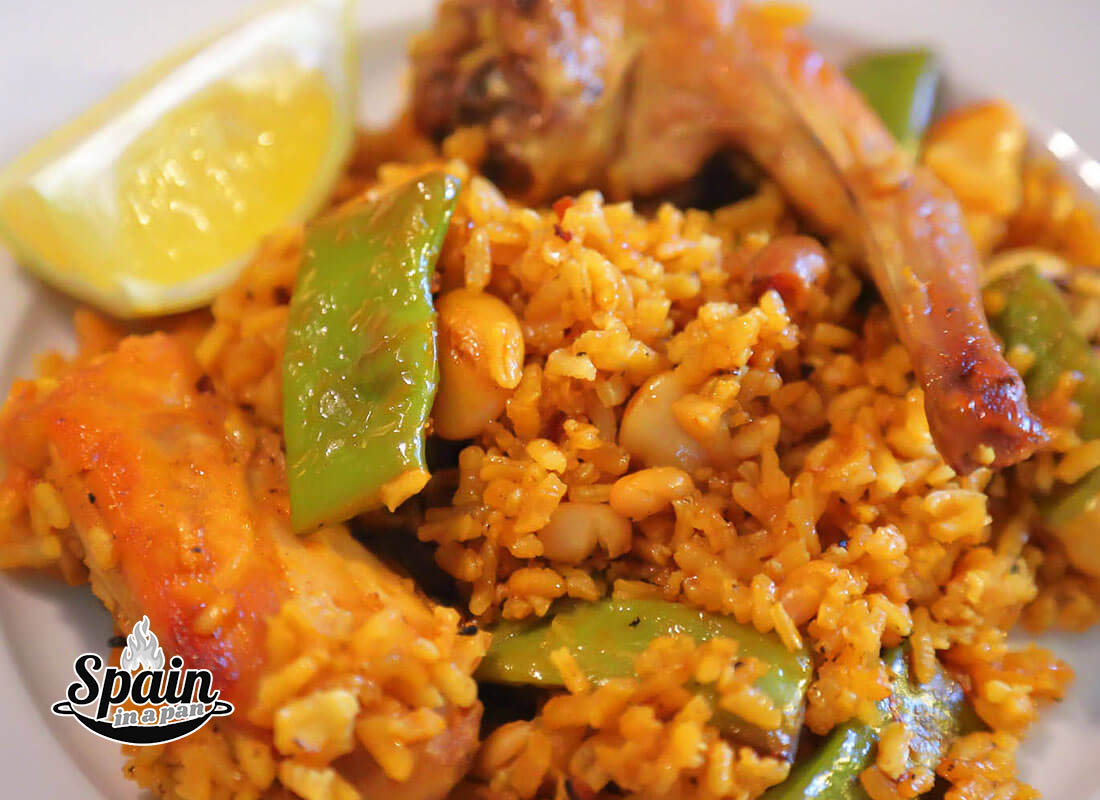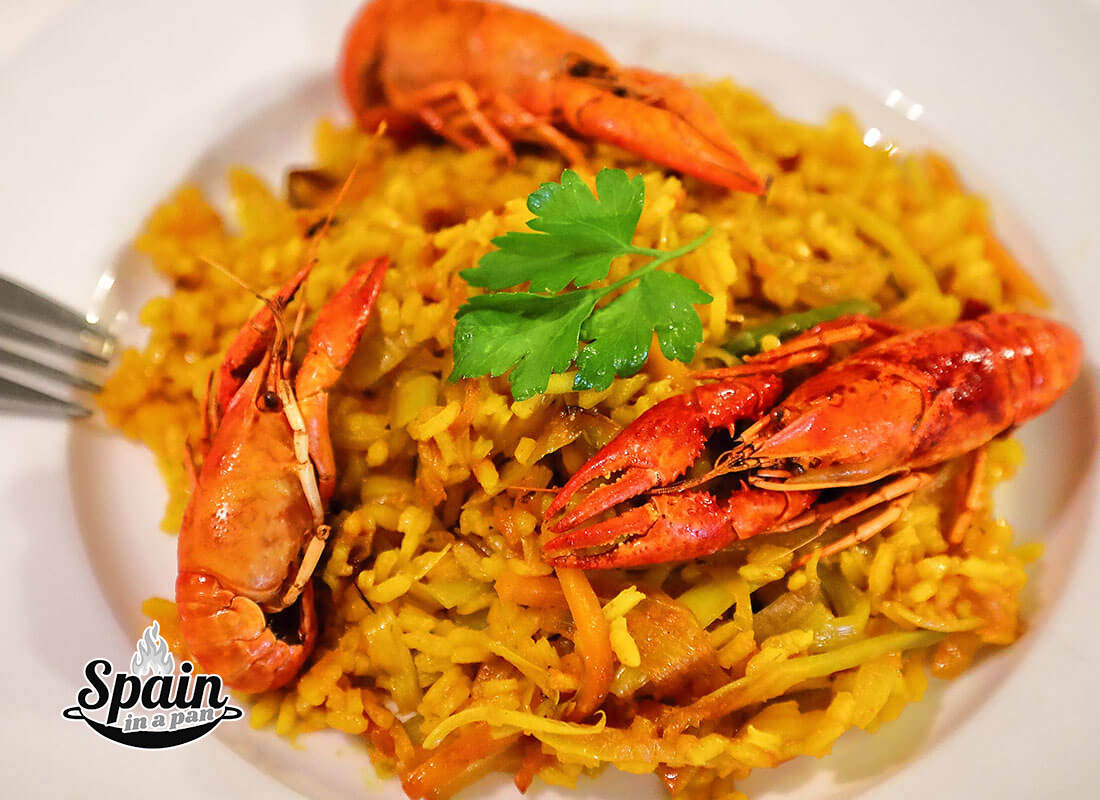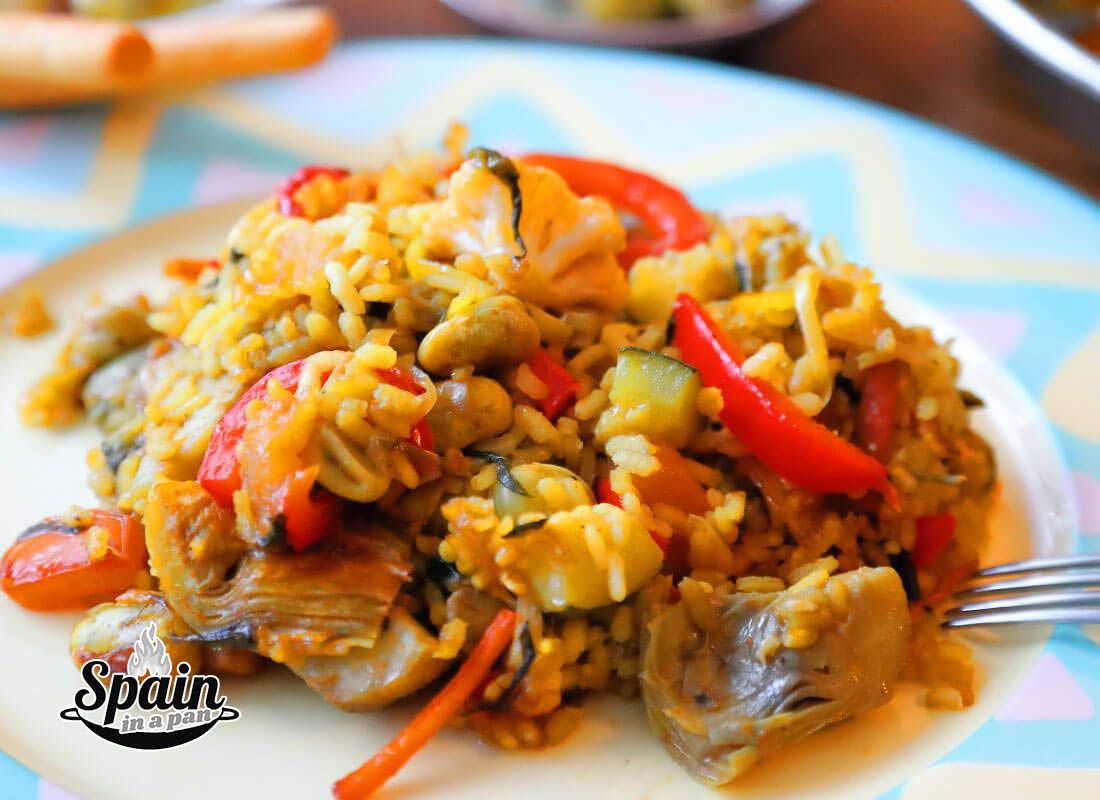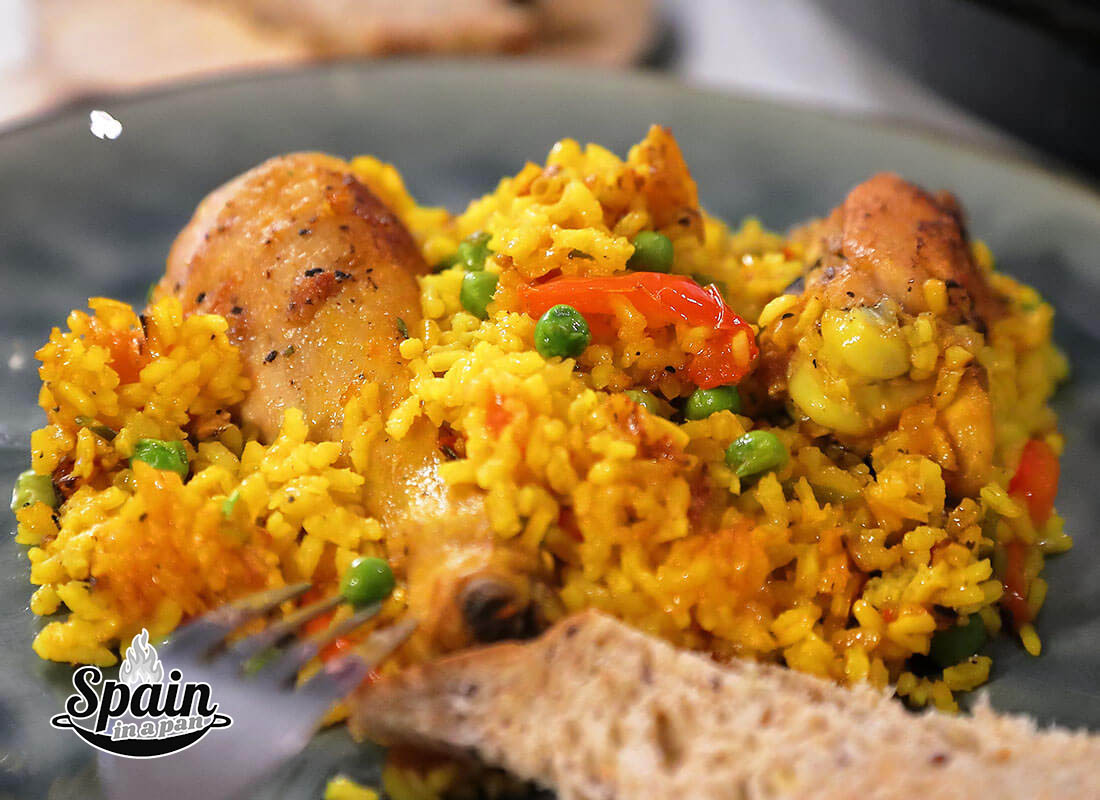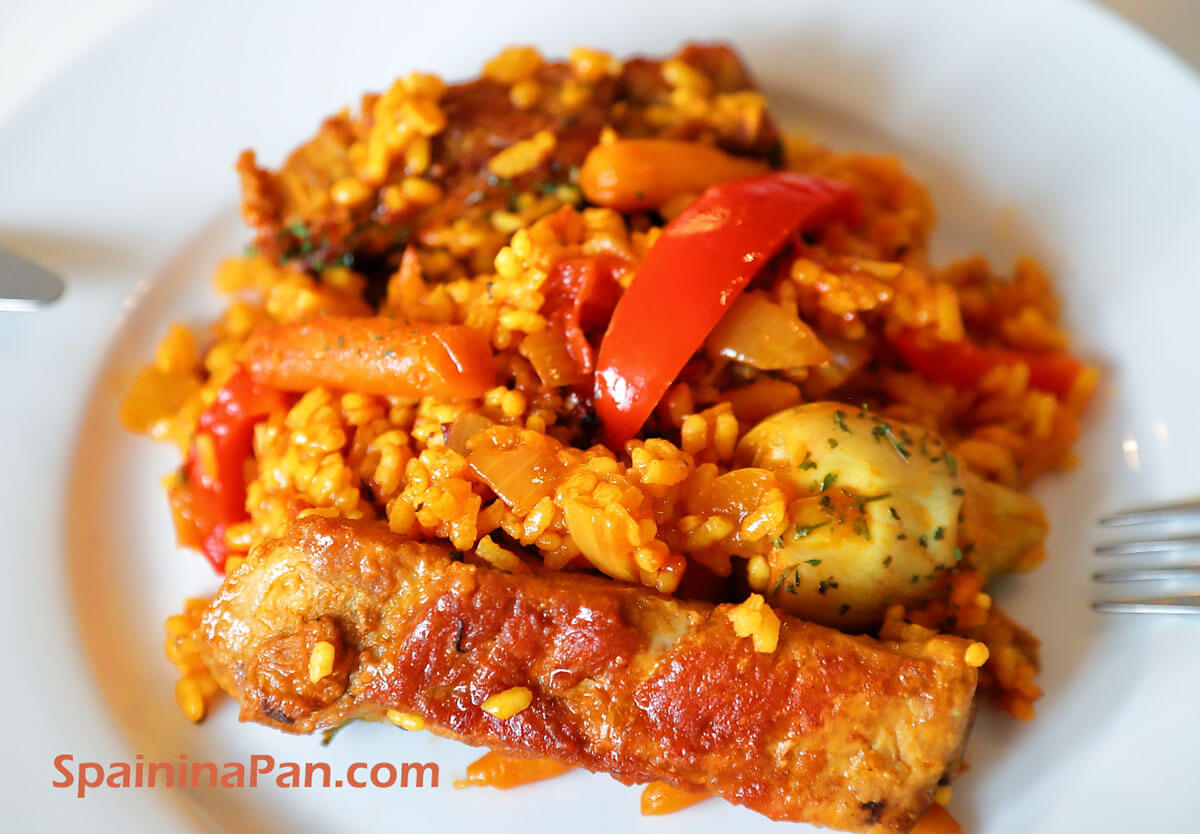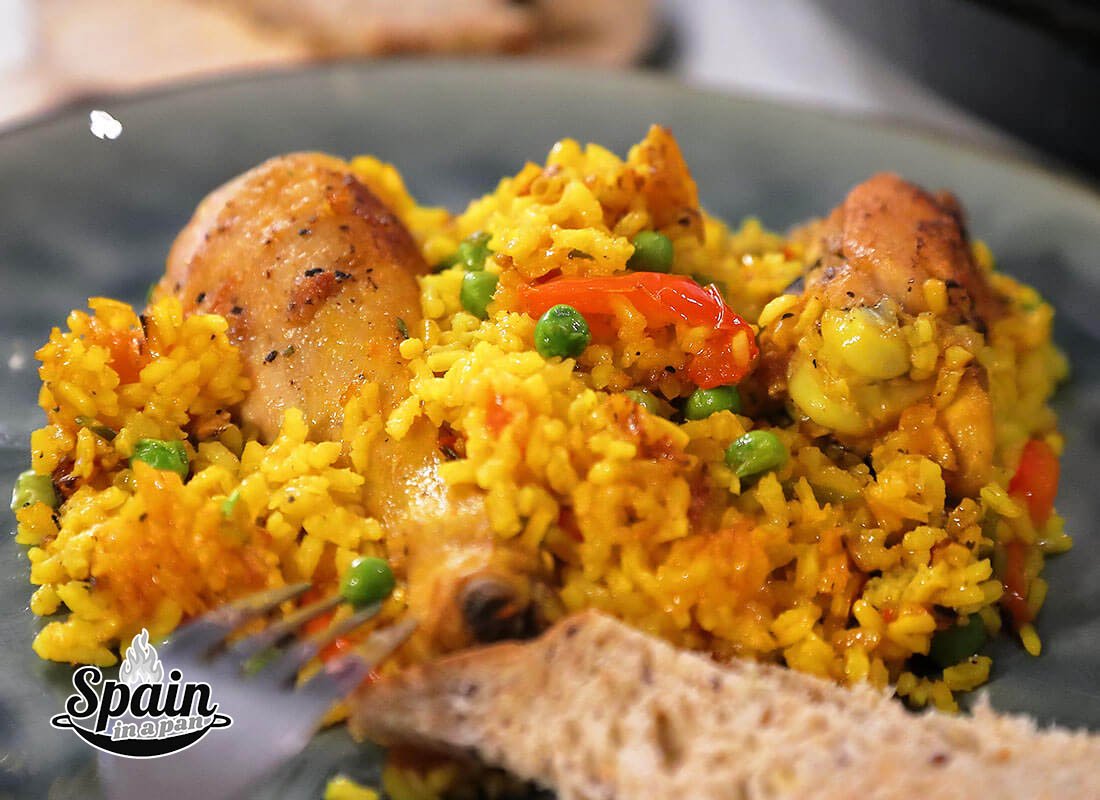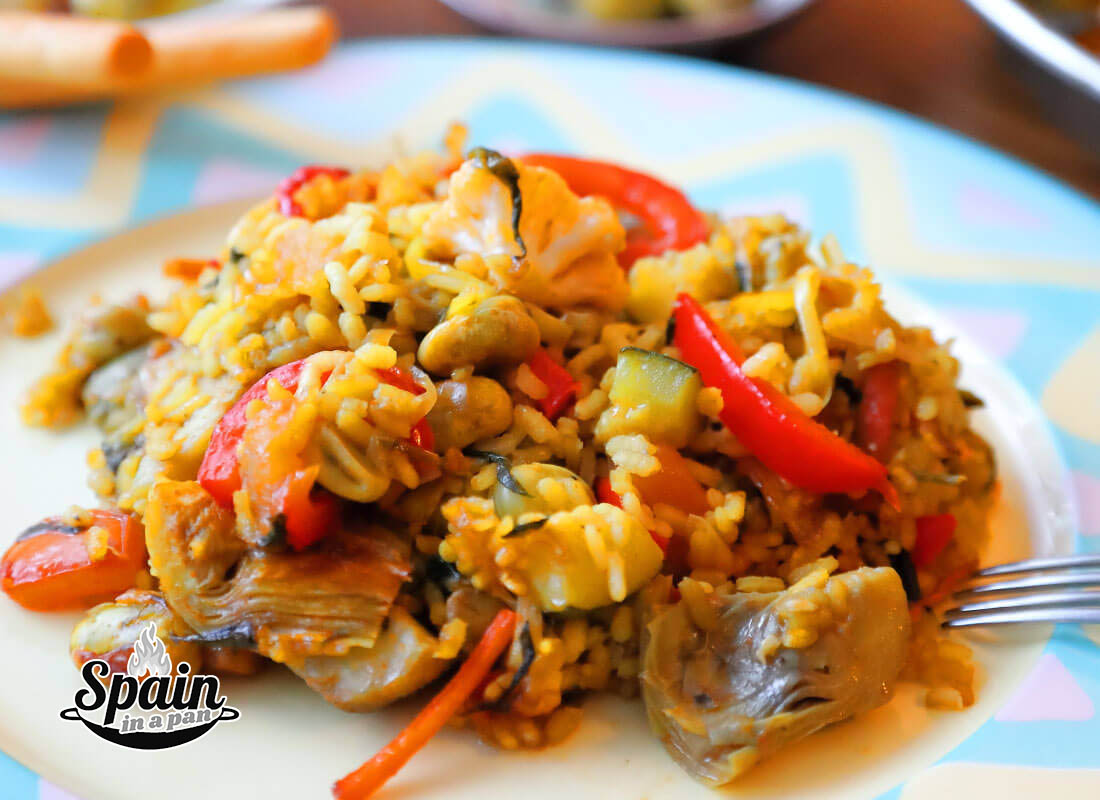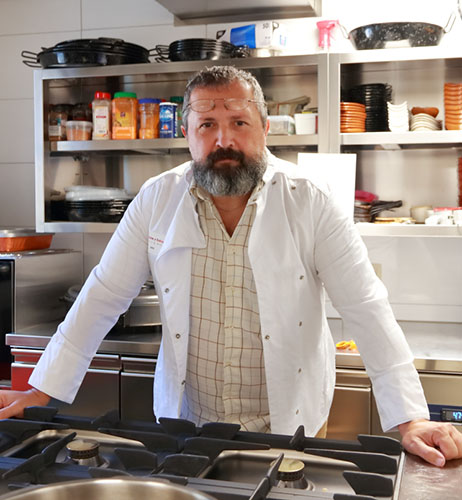- HOME
- Paella Recipes
Unstirred Delight! Authentic Spanish Paella Recipes.
By Edu Valor / Author - Spanish Chef
Note the word "unstirred" in the title! Authentic Spanish paella recipes are cooked that way. Once you add the water (or broth) and rice, it's hands-off until done.
Ingredients, like peppers or langoustines, can be put on top, but the rice remains untouched. That's how they prepare the revered Spanish dish.
Taste and texture are even better when cooked on a gas- or wood burner. The latter adds a smoked touch. I just love that rustic taste.
The crusty socarrat from unstirred rice adds that extra flavor and texture. Some chefs call it umami, similar to the taste of anything savory.
Paella cooking doesn't have to be spoiled by the weather. Electric pans have made things more convenient and you get the yummy socarrat too.
A room filled with that tempting aroma has anyone waiting in anticipation. Just never use gas burners inside your house! I can't repeat this often enough. Safety before everything!
Family and friends gatherings are more enjoyable without worries!
Cooking good food on a sunny summer day is always a pleasure, and Spain has plenty of sunny days!
There are some basic techniques involved to help you make that perfect and aromatic paella. Each and every time. Let me show you how on this link!
But Wait! Watch Out for the Paella Critics!
I honor old customs for the sake of tradition, for Spanish chefs. Proud Valencians will tell you there's only one kind of authentic paella. The paella Valenciana. Here's the full recipe.
They won't hesitate to tell you what should go in the recipe and what not.
The older generations of rural Valencia have this close affinity with the centuries-old dish. So much that it is considered an art piece.
All other paella dishes, different than the paella Valenciana will be rice-with-things (arroz con cosas) for them.
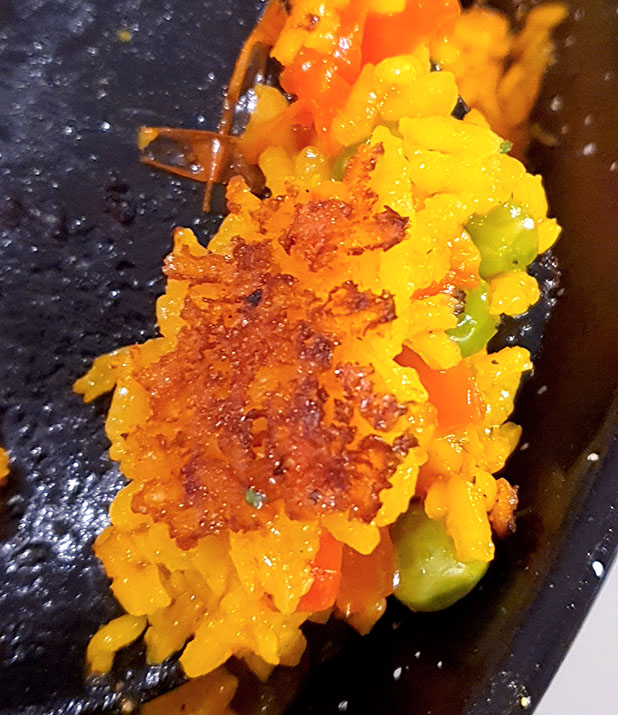 The golden brown crust underneath the paella rice is called "socarrat".
The golden brown crust underneath the paella rice is called "socarrat".I have nothing against a different recipe (eg seafood paella, etc...) but then we should specify the main ingredient. It's common sense!
I wouldn't want to go against the ages old tradition of making paella and what it means to a Spaniard.
Paella is More Than a Dish, It's a Concept
The famous paella really is a concept in Spain. It's more than a popular food. Parties, name days, and family Sundays often have paella as the central dish.
For some, I would dare to say (with a chuckle) the main reason to accept an invitation.
Andar-de-paella (out for paella) is a social happening, and all kinds of groups participate. Church groups, friends, hobby and sports clubs, etc....
When Valencians celebrate las Fallas festival in March, the central dish is again the paella.
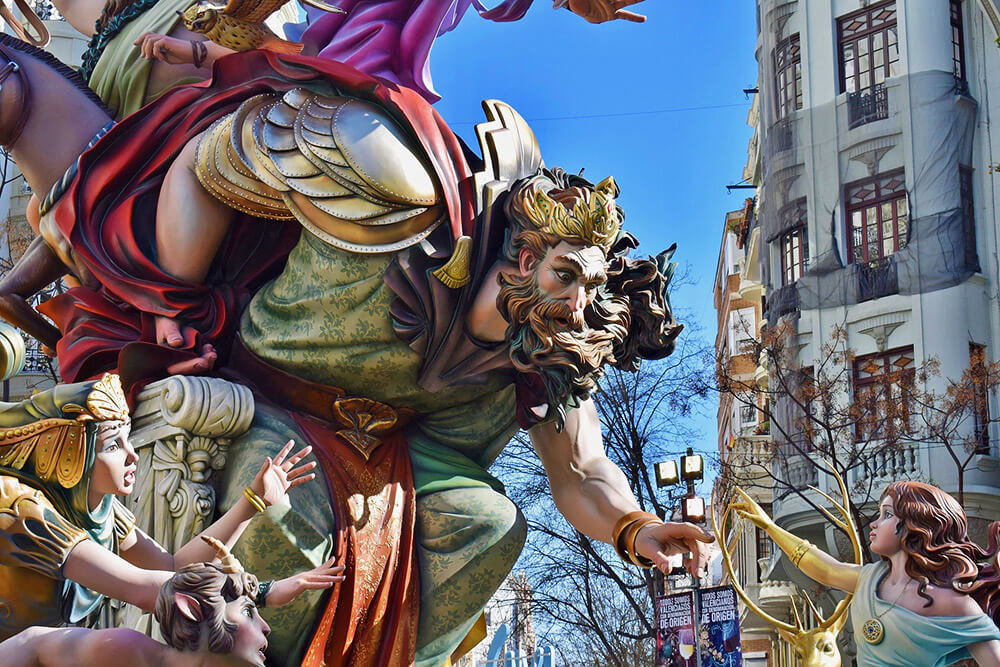 Wonderfully crafted Ninot puppets at the Fallas festival of Valencia. This is art!!
Wonderfully crafted Ninot puppets at the Fallas festival of Valencia. This is art!!Las Fallas is a large fair featuring paper mache puppets, called Ninots. These gigantic puppets are made with such artistry, that I pity their fate.
By the end of the celebrations, they're burned to the ground. But the Fallas wouldn't be the same without paella.
Otherwise, pay a visit someday, and you'll see enormous paella pans simmering on wood fires at night. If you don't find the pans, I'm sure the wonderful smell will lead you to them.
The Origins of the Paella
Experts say it began around the Albufera lake region of Valencia. When exactly is still debated. Some say in the 15th century, others in the 18th century.
The first written documents of the dish are from the 18th century and was called arroz a la Valenciana (Valencian rice, later becoming paella). We do know it was already prepared before that age in Valencia.
Farmers wanted to cook something quick (in the fields) without too much hassle, and used rice as there was easy access to it. That certainly sounds adventurous, doesn't it?
They combined the rice with ingredients that were immediately available. Vegetables and often chicken, rabbit, frog legs, snails and fish.
There are a few origin stories. To me, the (rice-) farmer's version makes the most sense. I imagine they didn't like leaving their equipment or animals behind.
Or maybe it was for the sake of saving time.
Workers would often eat the paella as a group, directly from the pan. No dishes to wash! Having a meal on the spot is clever and convenient.
From the Latin word "patella" (an open pan), we see the word "paella". A large, flat pan.
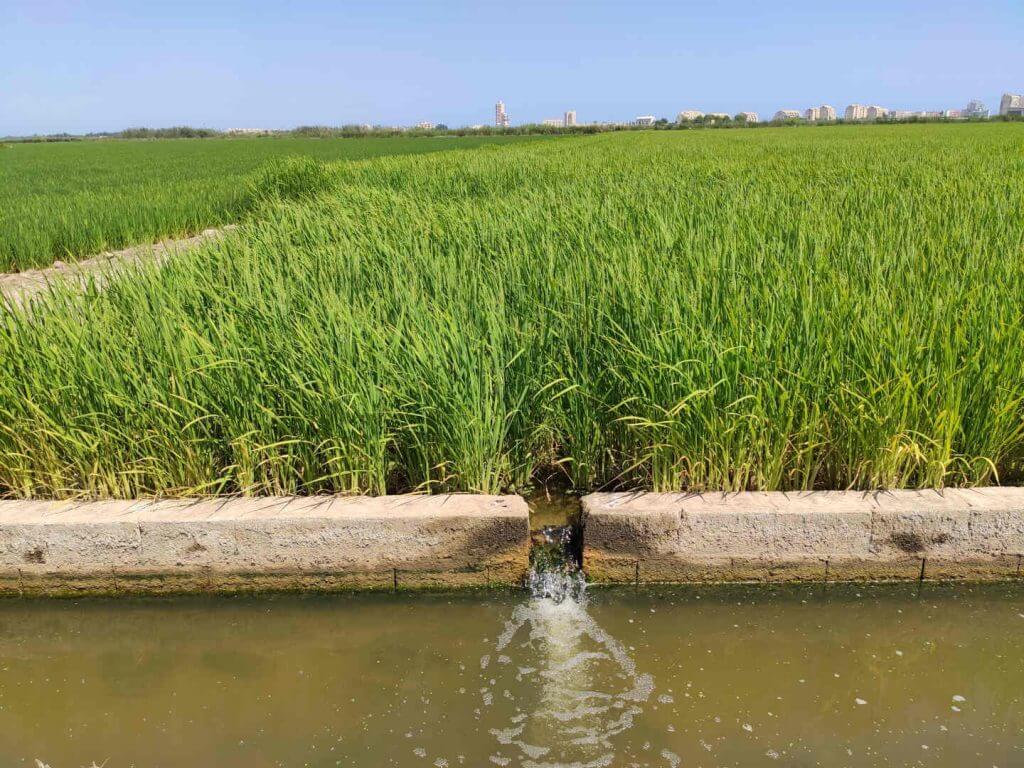 A huge rice field in the Albufera region of Valencia. Where the modern Albufera rice variety comes from.
A huge rice field in the Albufera region of Valencia. Where the modern Albufera rice variety comes from.When the dish gained popular traction, the word "paellera" (or pan to make paella) became common too! Not that it matters much because "paella" is already the pan. Later it became the name of the recipe.
Farmers continued using whatever ingredients were at hand. They were more concerned about having a meal providing enough energy to work.
Wood fire cooking on the field became a custom! It all feels natural and rustic. An enjoyable experience!
At one point duck was added, broth instead of water, tomatoes, garlic, saffron and a few other things. In any combination.
Traditional dishes evolved and spread out into the different, authentic Spanish paella recipes we have today. Valencia was and still is a significant rice-cultivating community.
Variations of the Paella
The traditional paella Valenciana became popular. It made its way through Spain and internationally, thanks to regional expositions.
When a dish becomes well-known, there will be regional influences. You can be sure as eggs is eggs!
I would be curious to know what your favorite variation is? If you're unsure, below there's a list of the more popular recipes.
Just know, today there are many paellas. You might wonder how many. Honestly, there are as many mouth-watering recipes as there are families in Spain. Except within the paella Valenciana group. They around 200 variations.
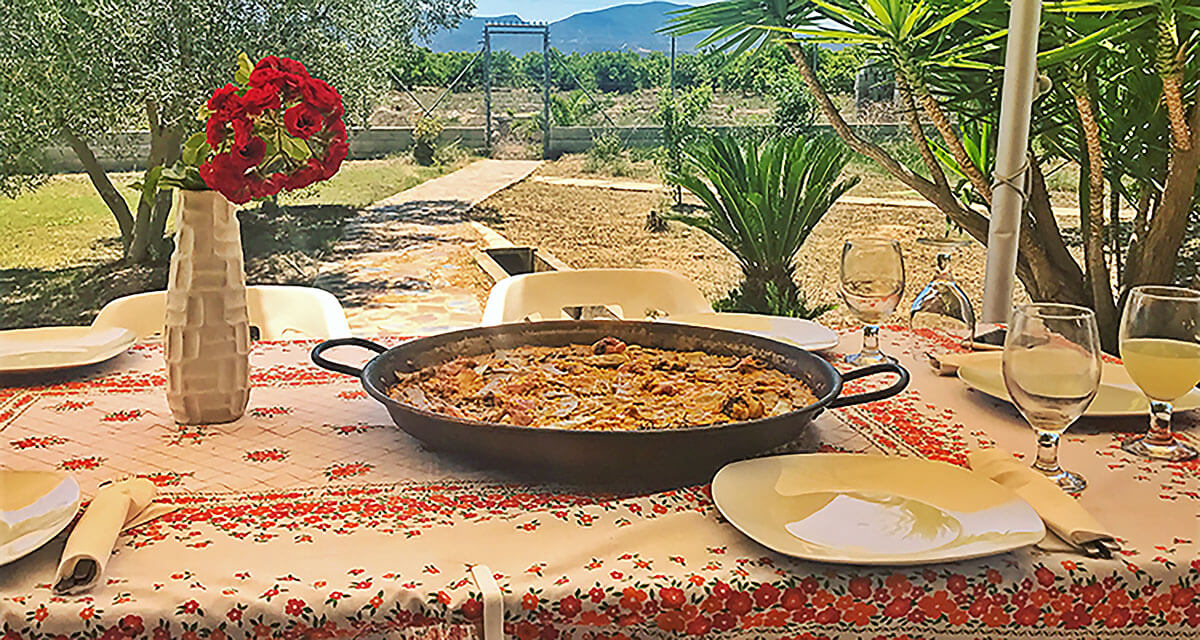
But some Valencians will say there's only one. The paella Valenciana. Here are other popular recipes:
- Paella Marinera or Mariscos (seafood paella)
- Paella Mixta (seafood and meat paella)
- Paella de Pollo (chicken paella)
- Paella Negra (black paella or paella in ink)
- Paella de Verduras (vegetables paella)
Paella de mariscos and paella de pollo are what I mostly prepare at home. What are your favorite ones? Let's find out with the delicious recipes below!
